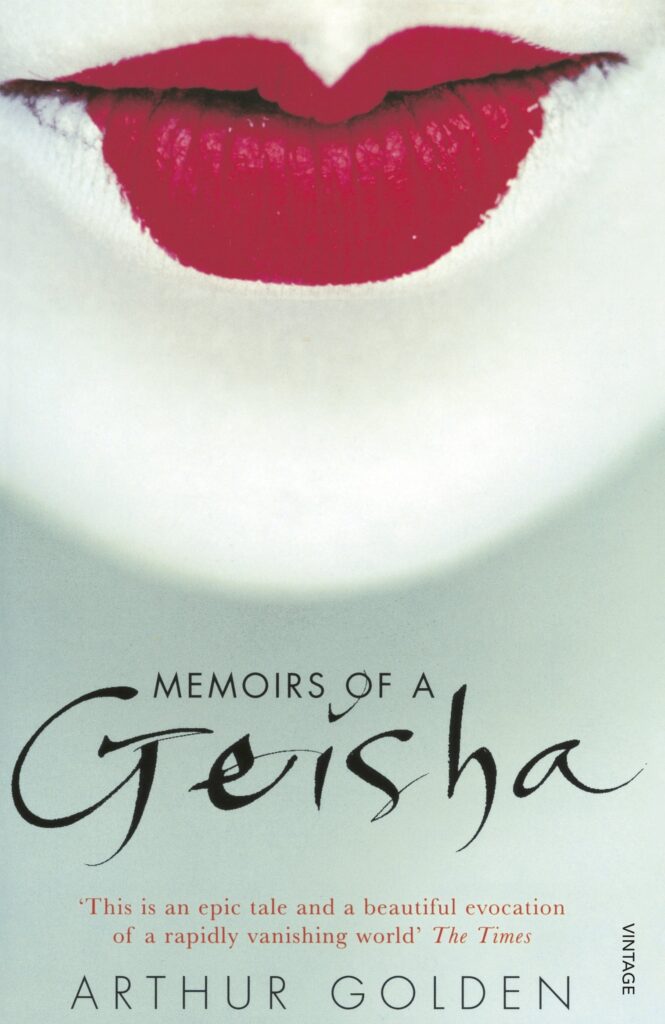
I really enjoy novels which tell stories on a grand scale, things which span a character’s entire life and give you a chance to see them, the people in their life and the world around them change over time. Memoirs of a Geisha does exactly that, detailing the life of a fictional geisha, focusing especially on her life in Kyoto during the 1930s and the 1940s.
Life for a geisha is hard and far from the luxurious life that their clients may have believed them to lead. You see the things that they have to endure, from difficult clients to the toxic atmosphere created by geishas working competitively in the same area. At times, it was a difficult book to read because there are a lot of hardships contained within the story, but it’s also deeply compelling. The main character is sold at a young age, before she could even really comprehend that someone would sell a child, then she finds it very hard to adapt to life with the new family she lives with afterwards.
She’s not a geisha at first and instead simply works to keep their house clean as a servant. I felt very sorry for her most of the time – especially as she is continuously manipulated by Hatsumomo, a geisha and “sister” living in the same house. Hatsumomo was an especially unlikable character – devilishly intelligent and using that intelligence to bend everybody to her will. But, ultimately, she’s a tragic figure and someone created by the unpleasant environment in which geisha had to exist. Her ultimate fate, I thought, really highlighted that and I do always enjoy a story which makes me feel sorry for someone I initially disliked.
There were a lot of strong characters in this book. Another good one was Nobu, a business man who enjoys the company of geisha, but who can be quite a difficult and bitter man to deal with. There’s also Mameha, an older geisha who does a lot to help the protagonist in her career as a geisha. They both left a big impression on me, although, unfortunately, I did feel that Chiyo (a.k.a. Sayuri), the main character, seemed very much a kind of blank canvas. I’ve heard it said that this was done to reflect the way that geisha were expected to be almost living dolls, having no personality of their own and existing only for the pleasure of others… but I’d still have preferred her to feel a little more well rounded. Funnily enough, she, as the narrator of the story, feels more fleshed out than she as the main character, actually does, if that makes sense?
I felt the story picked up a lot at the advent of the Second World War – naturally, everybody’s lives are changed drastically and it’s very sad to see the toll that it takes on all of the characters (and the city they know). Something I particularly enjoyed was the fact that it showed the war through the eyes of regular people living in Japan, a perspective which I’ve not encountered very often in the fiction that I’ve consumed, so it was a refreshing change from the usual – and an educational one.
So, overall, it’s a book I recommend quite strongly. It gives a fascinating insight into Japan during the early twentieth century and of the life and culture surrounding geishas. The world is wonderfully fleshed out and filled with endearing characters whose fates you’ll be keen to discover. Just be sure to prepare yourself emotionally, it can be pretty intense – there was one scene in particular, containing sexual assault, which I found particularly upsetting. Not that that’s a bad thing – people need to aware of these things and it’s good that Arthur Golden didn’t hold back, but it is difficult to read sometimes. Still, the novel took me on quite a journey and one which I’m glad I got to go on.
Rating: 9/10
